Development and design
This second-class of battle cruisers (1908 plan) was based on that of Neptune to the artillery configuration plan and still strongly resemble the Invincible, not only keeping their armour configuration, but also their faults. Construction in a short time was also justified for providing two first line ships for the Pacific Commonwealth navies, HMAS Australia and HMNZS New Zealand. They were the subject of some exaggerations both from Sir John Fisher in terms of firepower, as from Fred T. Jane in his review for the armour.
⚠ Note: This old post is scheduled for rewriting. Completion expected later in 2024.
❯❯❯❯❯❯❯❯❯❯❯
In fact they were neither faster nor better armed/protected. Additional length for the hull was meant to give more room for the central battery, allowing an easier broadside, unlike the Invincible.
For obvious reasons of smoke clogging the watcher’s view, it was made higher during testing, a modification applied in the yard for the other two. The problem was also the same with the rear tripod fire control, which was dismantled during the war on the three ships.
Modifications
HMS Indefatigable was laid down and launched in 1909, completed in April 1911 while HMAS Australia was ordered in June 1913 and New Zealand in November 1912. The latter received a 76 mm and a 57 mm AA guns.
The other two received a single 76 mm gun AA in March 1915. After the battle of Jutland their protection was altered, they received new modern searchlights, new enlarged fire direction post and a shorter, reinforced main mast.
Their stern torpedo tubes were removed. A further 76 mm gun was added in 1917 and in 1918 a short take-off platform on the two central turrets, operating a a Sopwith Strutter for reconnaissance and a Sopwith Camel for escort. In 1919-20, they received some changes to their AA artillery. Their career was active but not especially memorable.
HMS Indefatigable
HMS Indefatigable was operational within the 1st squadron of battle cruisers, then was sent to the Mediterranean with the 2nd squadron of battle cruisers.
She participated in the hunting of the Admiral Souchon’s German squadron, and then served in the Aegean. She became Admiral Carden’s flagship, and was replaced by the HMS Inflexible.
Back to the Grand Fleet in early 1915 she was at the forefront of Beatty vessels during the Battle of Jutland in May 1916, taking several hits from the Von der Tann, including two in the ammunition rear turret bunker.
The hull broke up in two at the rear, and the ship quickly sank by the stern. Another salvo made explode central bunkers and the ship was literally blew apart and disintegrated in the world’s known largest explosion at that time, leaving no chance to her crew.
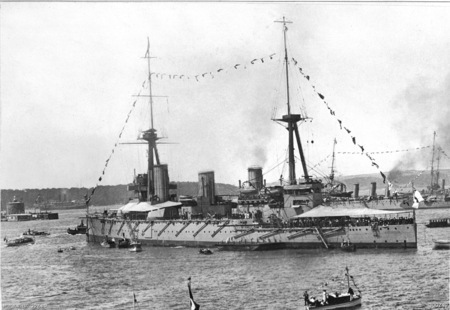
HMAS Australia at Sydney October 1913
HMAS Australia
HMAS Australia was sent to Australia where she became the flagship of the RAN (Royal Australian Navy). She was mobilized in a massive squadron combining Australian and New Zealander ships to prevent an incursion of Von Spee’s squadron in the South Pacific.
She participated in the Second Battle of the Falklands, still hunting down Spee’s ships, then returned in the Grand Fleet. She was not present at the Battle of Jutland, being repaired after a collision at sea with her sister ship New Zealand in April 1916.
She remained flagship of the 2nd squadron of battle cruisers until 1919 before returning to Australia and serve until 1922 but then was out of service due to compliance with restrictions of tonnage resulting from the Washington Treaty.
The Australian Government decided to scuttle her in a great ceremony held in April 12, 1924 in Sydney Harbour. Today she’s a large artificial artificial coral reef teaming with life, and a major local touristic and diver’s attraction, a fitting end for such a steel grim reaper.
HMNZS New Zealand
HMNZS New Zealand became the flagship of the small Royal New Zealand Navy (RNZN), but she was requisitioned after completion by the Royal Navy to bolster the Grand Fleet’s strenght. She began touring the world as RN courtesy ambassador, then left for the Baltic in 1913.
She was flagship of the Admiral of the 2nd squadron of battle cruisers in August 1914. She fought in Dogger Bank carrying Admiral Beatty’s mark when HMS Lion was badly damaged and out of action. She collided later with Australia but was repaired in time to participate in the battle of Jutland.
She fired 420 shots but only scored 4 hits and in return was struck by a 280mm shell behind the rear turret. She made another cruise, carrying Admiral Jellicoe around the world in 1919, but was disarmed and demolished under Washington Treaty’s tonnage limitations.
Links
The Indefatigable class on wikipedia
HMS Indefatigable on wikipedia
Specs Conway’s all the world fighting ships 1921-1947.
Indefatigable specifications |
|
| Dimensions | 179,8 x 24,4 x 8,1 m |
| Displacement | 18 500 t, 22 110 t FL |
| Crew | 800 |
| Propulsion | 4 screws, 4 Parsons turbines, 32 Babcock & Wilcox boilers, 44,000 hp |
| Speed | 25.8 knots (47.8 km/h; 29.7 mph) |
| Range | 6,690 nmi (12,390 km; 7,700 mi) at 10 knots (19 km/h; 12 mph) |
| Armament | 8 x 305 (4×2), 16 x 102, 4 x 47 mm, 3 TT 457 mm (SM) |
| Armor | Belt 150, Battery 180, Barbettes 180, turrets 180, blockhaus 250, deck 65 mm. |
Gallery
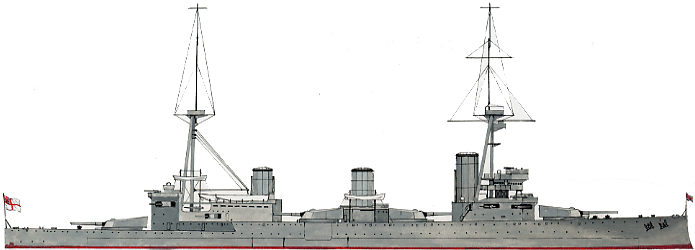
Illustration of the Indefatigable in November 1914.



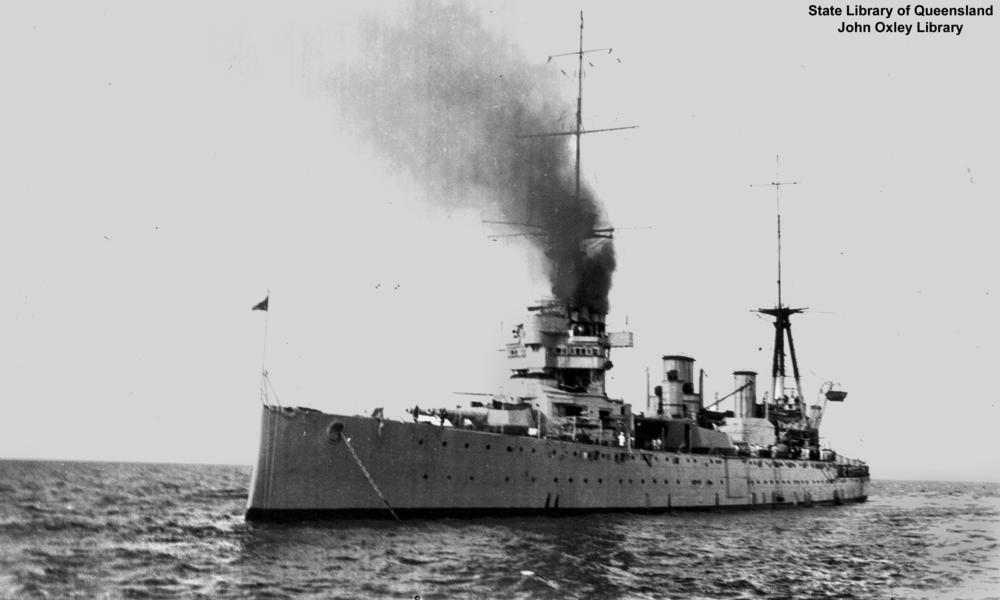
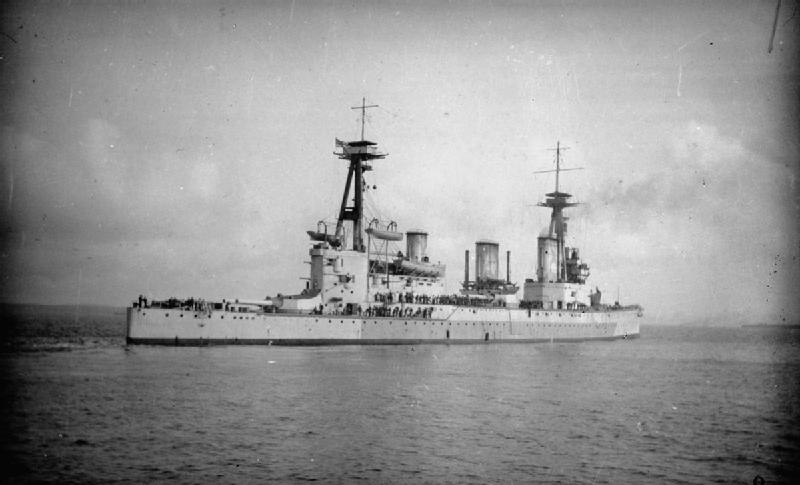
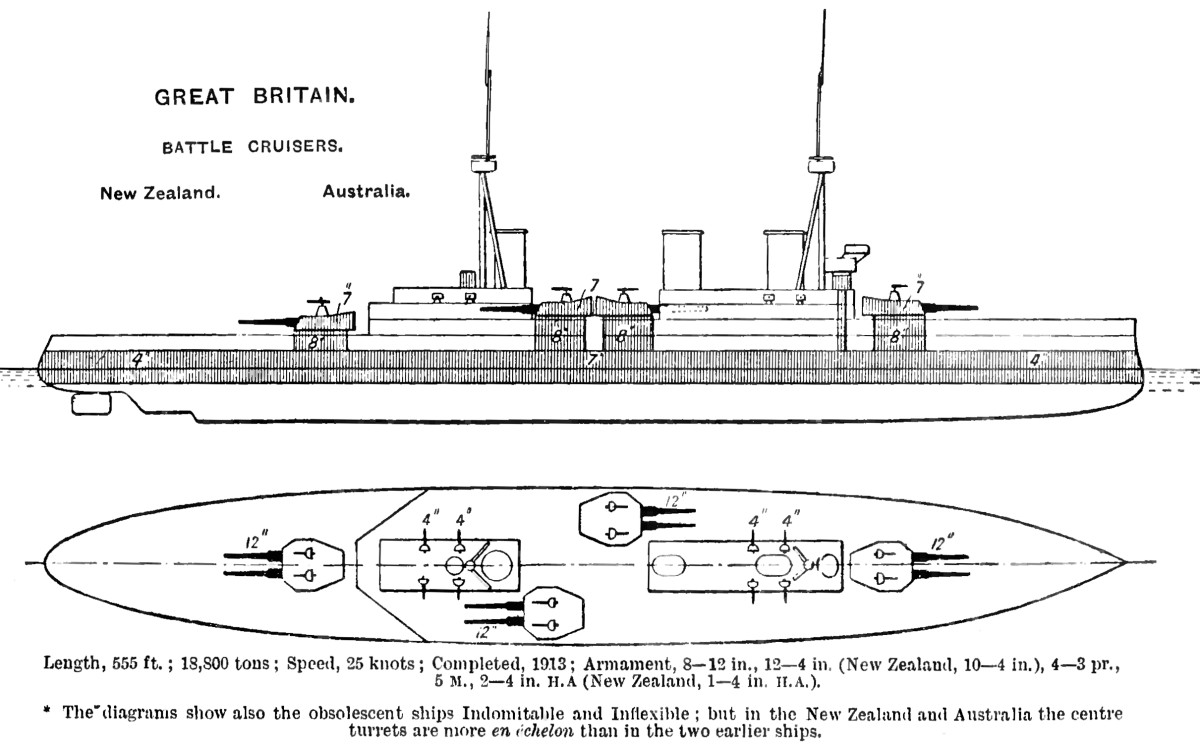
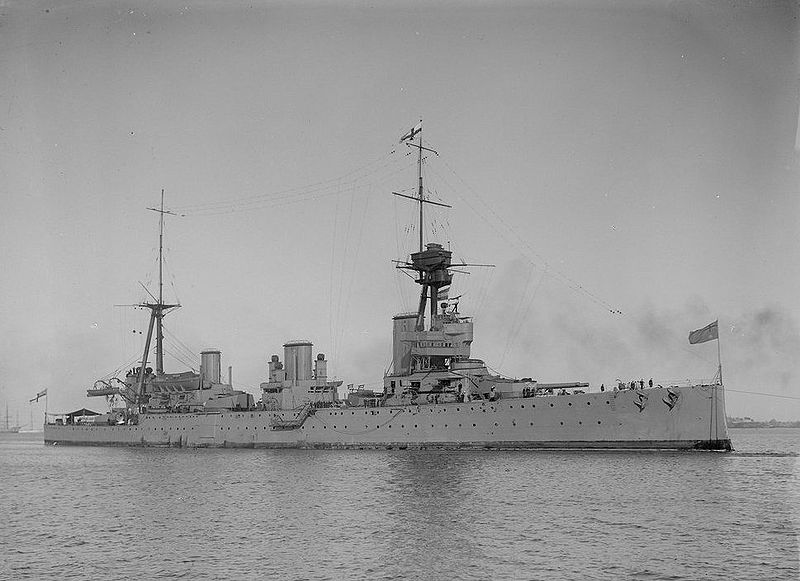
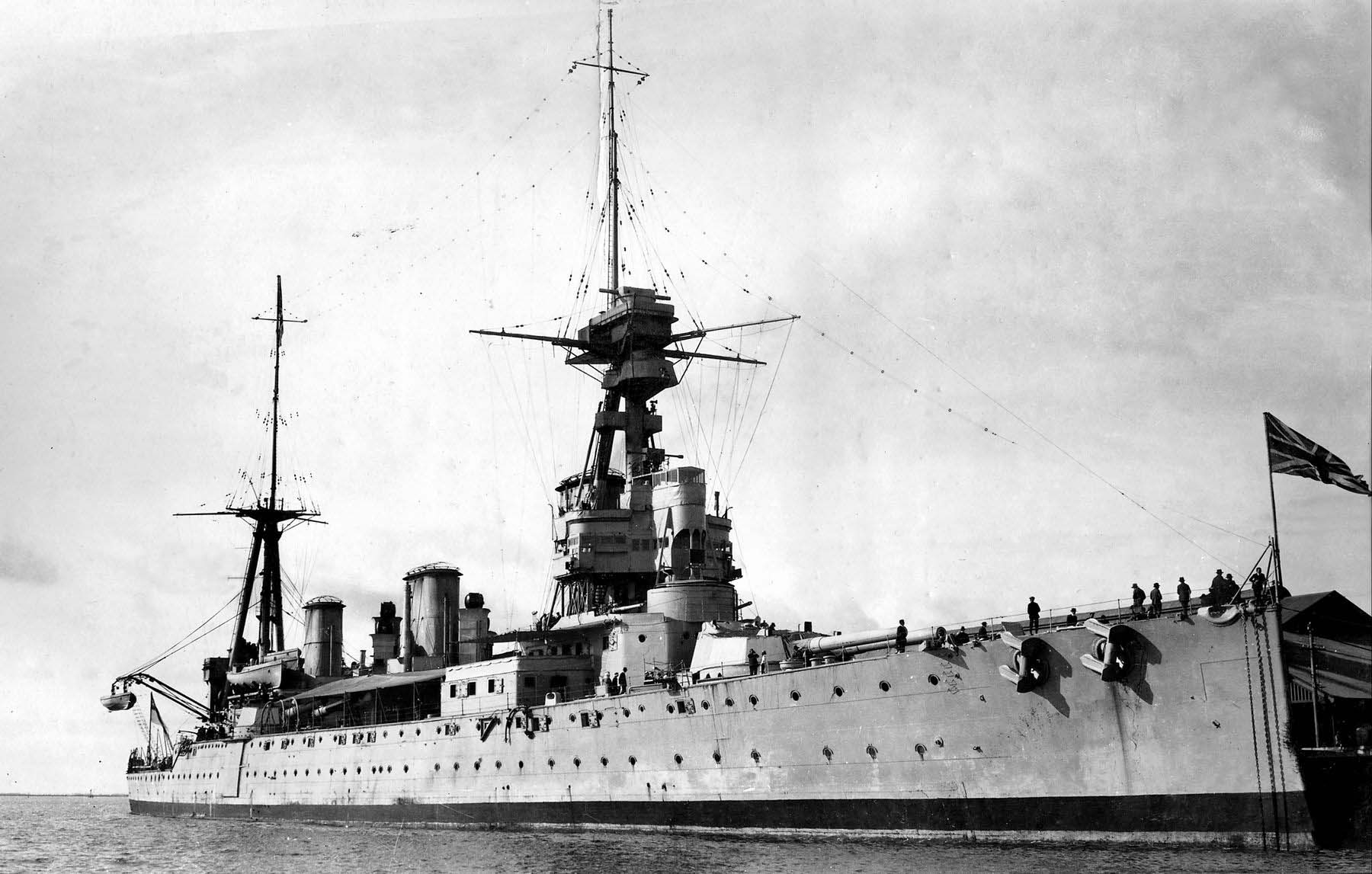
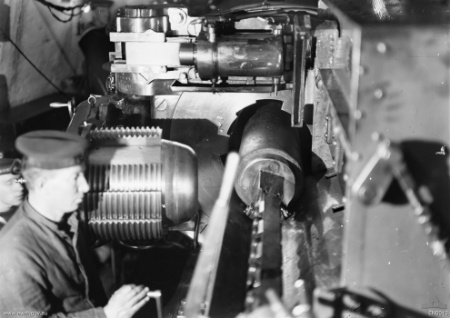
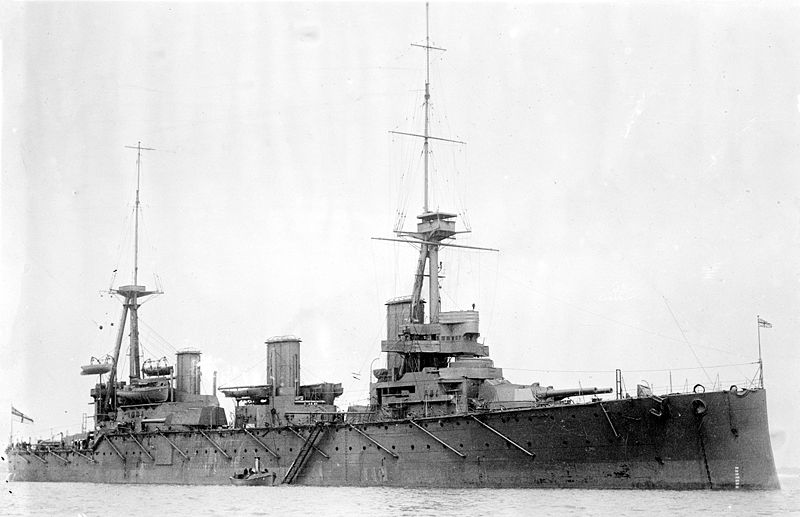

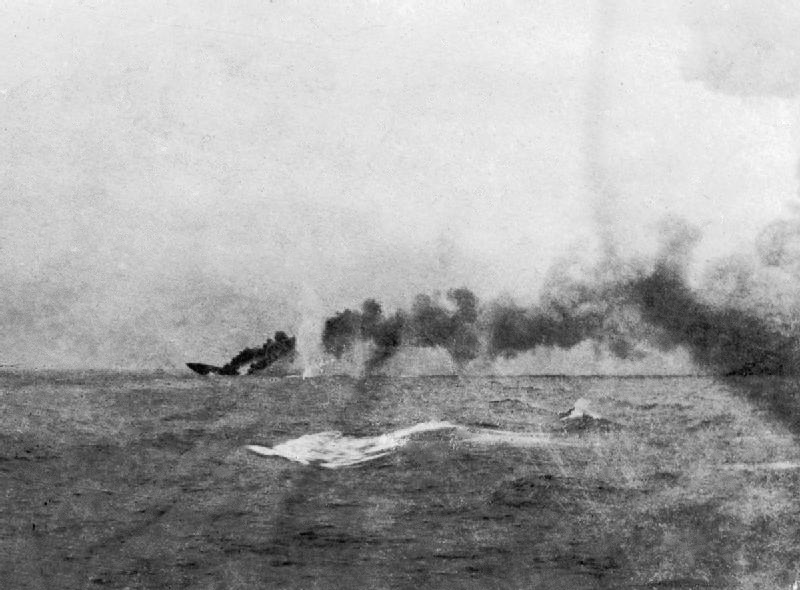
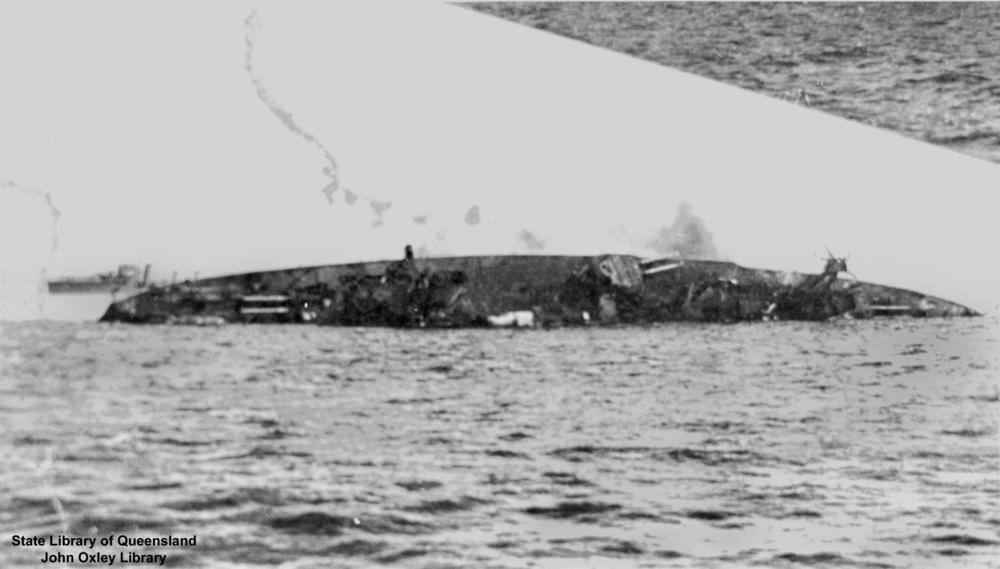

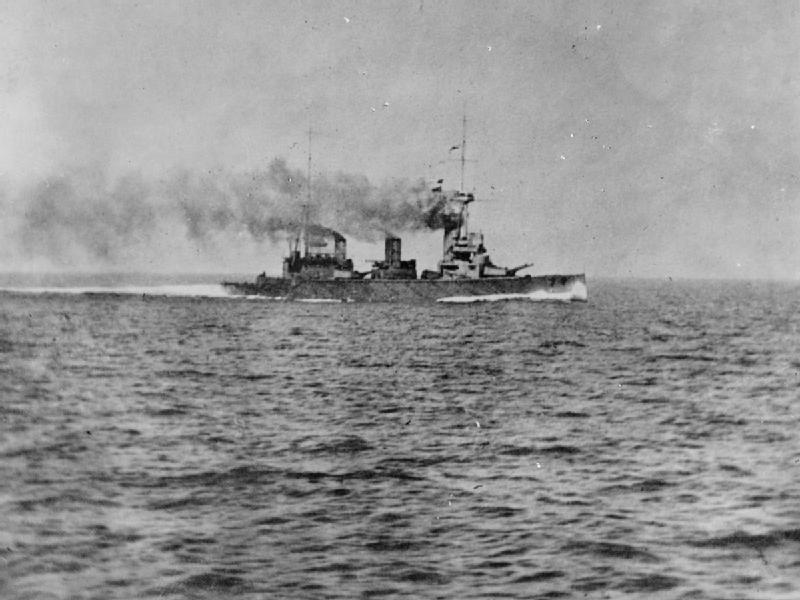
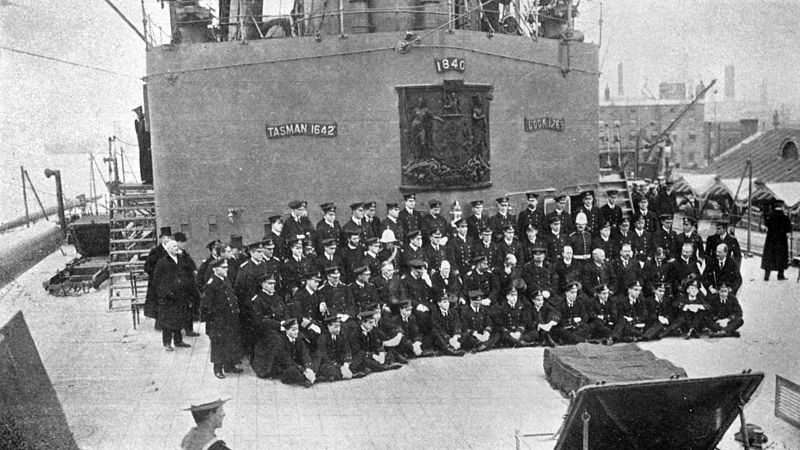
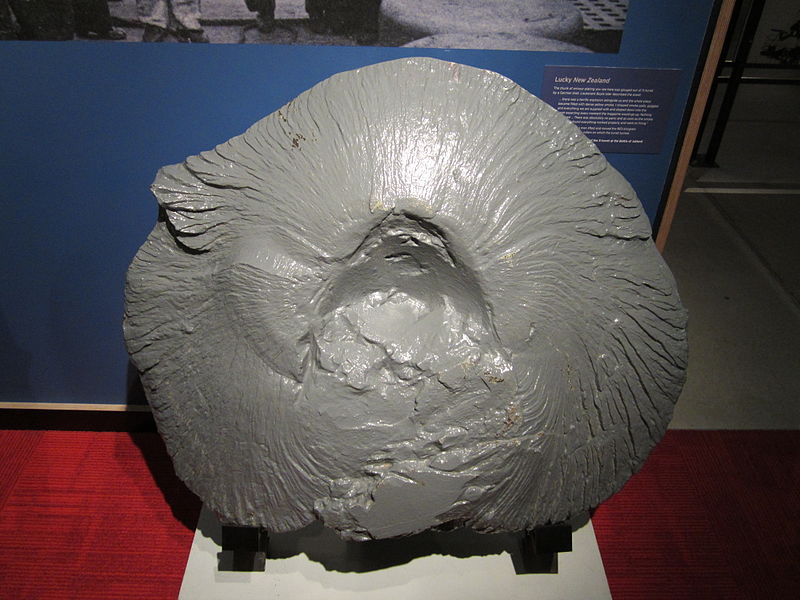
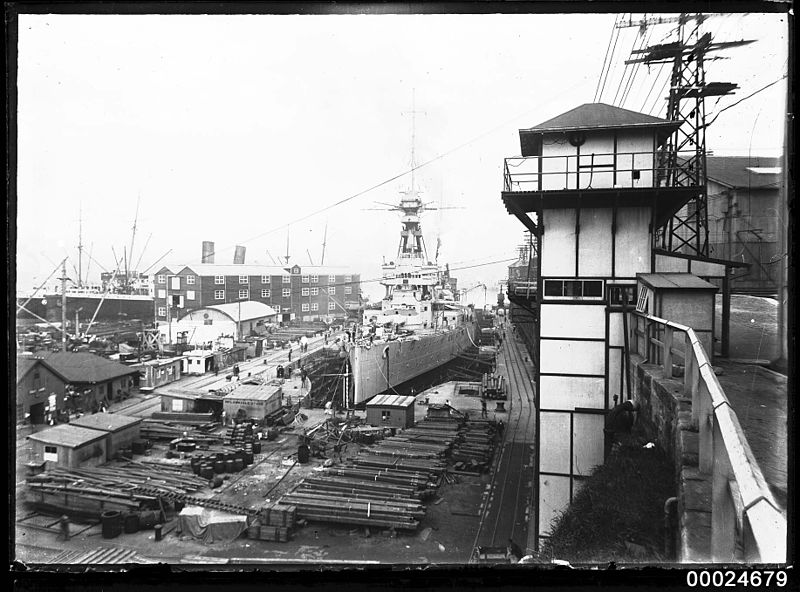
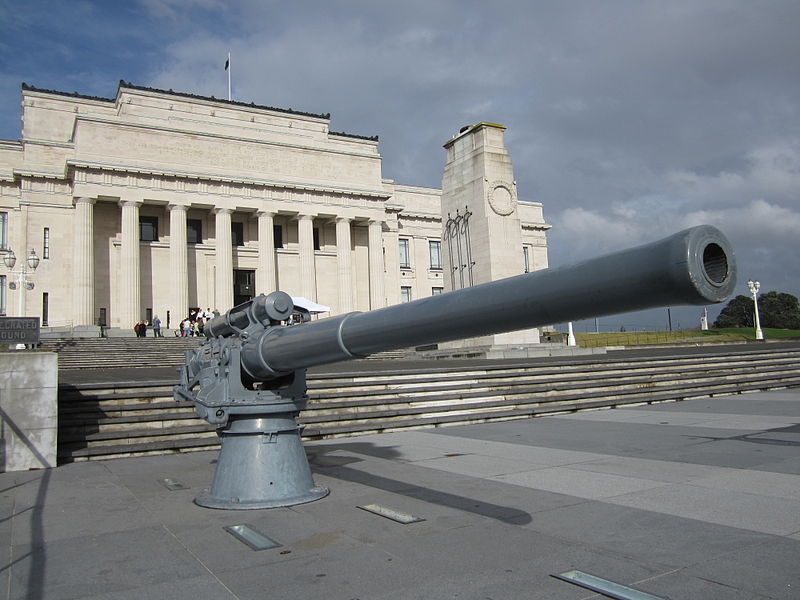
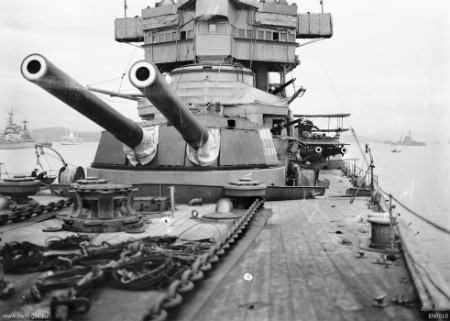
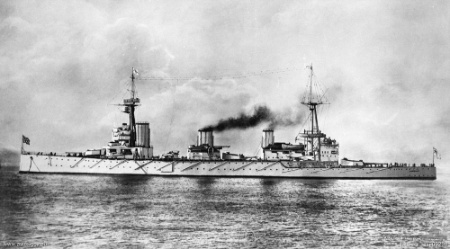
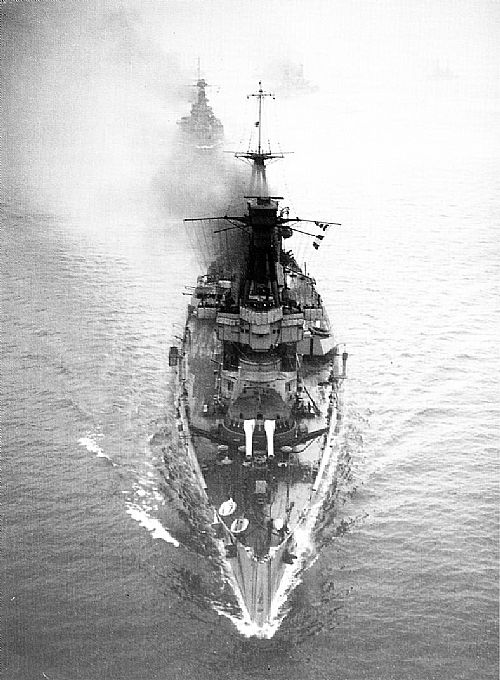
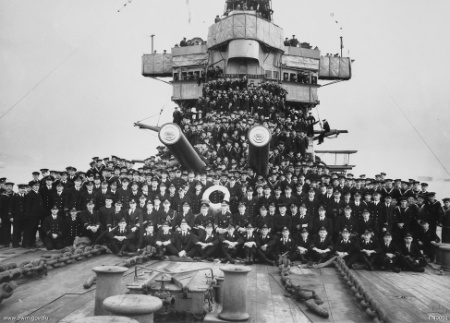
 Latest Facebook Entry -
Latest Facebook Entry -  X(Tweeter) Naval Encyclopedia's deck archive
X(Tweeter) Naval Encyclopedia's deck archive Instagram (@navalencyc)
Instagram (@navalencyc)





 French Navy
French Navy Royal Navy
Royal Navy Russian Navy
Russian Navy Armada Espanola
Armada Espanola Austrian Navy
Austrian Navy K.u.K. Kriegsmarine
K.u.K. Kriegsmarine Dansk Marine
Dansk Marine Nautiko Hellenon
Nautiko Hellenon Koninklije Marine 1870
Koninklije Marine 1870 Marinha do Brasil
Marinha do Brasil Osmanlı Donanması
Osmanlı Donanması Marina Do Peru
Marina Do Peru Marinha do Portugal
Marinha do Portugal Regia Marina 1870
Regia Marina 1870 Nihhon Kaigun 1870
Nihhon Kaigun 1870 Preußische Marine 1870
Preußische Marine 1870 Russkiy Flot 1870
Russkiy Flot 1870 Svenska marinen
Svenska marinen Søværnet
Søværnet Union Navy
Union Navy Confederate Navy
Confederate Navy Armada de Argentina
Armada de Argentina Imperial Chinese Navy
Imperial Chinese Navy Marinha do Portugal
Marinha do Portugal Mexico
Mexico Kaiserliche Marine
Kaiserliche Marine 1898 US Navy
1898 US Navy Sovietskiy Flot
Sovietskiy Flot Royal Canadian Navy
Royal Canadian Navy Royal Australian Navy
Royal Australian Navy RNZN Fleet
RNZN Fleet Chinese Navy 1937
Chinese Navy 1937 Kriegsmarine
Kriegsmarine Chilean Navy
Chilean Navy Danish Navy
Danish Navy Finnish Navy
Finnish Navy Hellenic Navy
Hellenic Navy Polish Navy
Polish Navy Romanian Navy
Romanian Navy Turkish Navy
Turkish Navy Royal Yugoslav Navy
Royal Yugoslav Navy Royal Thai Navy
Royal Thai Navy Minor Navies
Minor Navies Albania
Albania Austria
Austria Belgium
Belgium Columbia
Columbia Costa Rica
Costa Rica Cuba
Cuba Czechoslovakia
Czechoslovakia Dominican Republic
Dominican Republic Haiti
Haiti Hungary
Hungary Honduras
Honduras Estonia
Estonia Iceland
Iceland Eire
Eire Equador
Equador Iran
Iran Iraq
Iraq Latvia
Latvia Liberia
Liberia Lithuania
Lithuania Mandchukuo
Mandchukuo Morocco
Morocco Nicaragua
Nicaragua Persia
Persia San Salvador
San Salvador Sarawak
Sarawak Uruguay
Uruguay Venezuela
Venezuela Zanzibar
Zanzibar Warsaw Pact Navies
Warsaw Pact Navies Bulgaria
Bulgaria Hungary
Hungary

 Bundesmarine
Bundesmarine Dutch Navy
Dutch Navy Hellenic Navy
Hellenic Navy Marina Militare
Marina Militare Yugoslav Navy
Yugoslav Navy Chinese Navy
Chinese Navy Indian Navy
Indian Navy Indonesian Navy
Indonesian Navy JMSDF
JMSDF North Korean Navy
North Korean Navy Pakistani Navy
Pakistani Navy Philippines Navy
Philippines Navy ROKN
ROKN Rep. of Singapore Navy
Rep. of Singapore Navy Taiwanese Navy
Taiwanese Navy IDF Navy
IDF Navy Saudi Navy
Saudi Navy Royal New Zealand Navy
Royal New Zealand Navy Egyptian Navy
Egyptian Navy South African Navy
South African Navy






























 Ukrainian Navy
Ukrainian Navy dbodesign
dbodesign